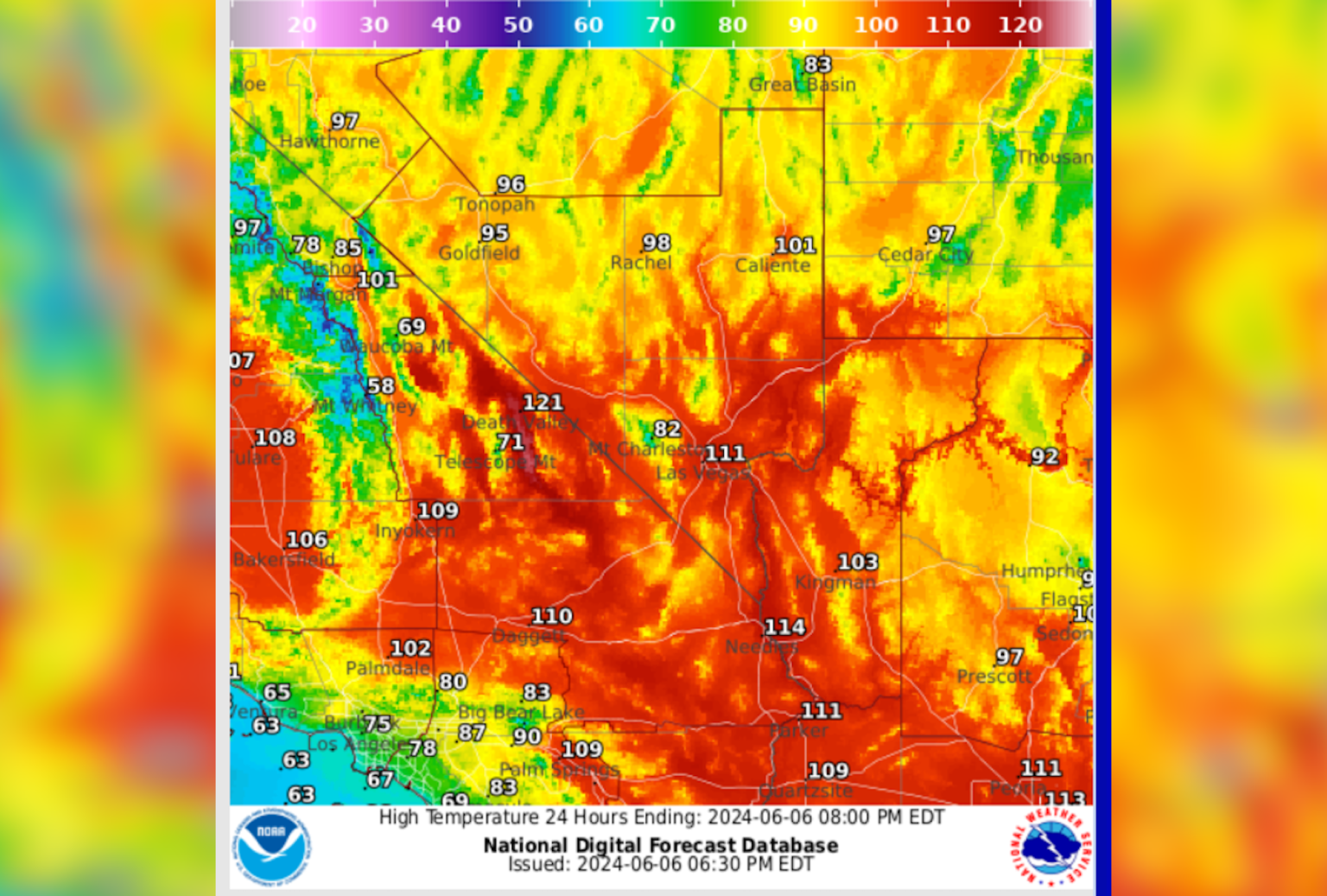Several cities in the southwestern United States experienced record-breaking temperatures on Thursday, with Las Vegas reaching 111 degrees, Kingman, Arizona reaching 105 degrees, and Needles, California hitting 115 degrees. Death Valley climbed to an astonishing 122 degrees, and Bishop tied its daily high at 102 degrees. This extreme heat was part of the Southwest’s first heat wave of the season, with excessive-heat warnings issued in four states, including major metropolitan areas such as Phoenix, Tucson, Fresno, Bakersfield, Albuquerque, and El Paso. Las Vegas was facing an “extreme” heat risk.
The National Weather Service issued warnings for those without effective cooling or adequate hydration, as well as for health systems, heat-sensitive industries, and infrastructure. The excessive-heat warning was extended until the end of Saturday for parts of Nevada, urging residents to stay hydrated and limit outdoor activities during peak sun hours. The Las Vegas Fire Department set up cooling stations across the city to help residents cope with the extreme temperatures and potential health risks associated with heat exhaustion and heatstroke.
Heat exhaustion is more likely to impact older adults and people with high blood pressure, with symptoms including headache, nausea, dizziness, thirst, and high body temperature. Heatstroke, a more severe condition resulting from the body’s inability to regulate its temperature, can lead to permanent damage or death. Symptoms of heatstroke can include confusion, loss of consciousness, profuse sweating, and seizures. The NWS warned that hazardous levels of heat could return to the Southern High Plains, including parts of Texas and Oklahoma, by the middle of the following week.
It is important for residents in areas affected by extreme heat to take necessary precautions to protect themselves from heat-related illnesses. Staying hydrated, avoiding extended exposure to the sun during peak hours, and seeking out cooling stations or air-conditioned spaces can help mitigate the risks associated with high temperatures. The NWS continues to monitor weather patterns and issue warnings to keep communities informed and safe during periods of extreme heat.
As the region grapples with its first heat wave of the season, record-breaking temperatures serve as a stark reminder of the threats posed by extreme weather events. Climate change is contributing to more frequent and intense heatwaves, emphasizing the importance of mitigating greenhouse gas emissions and adapting to a changing climate. The NWS’s classification of major and extreme heat risks helps to raise awareness about the dangers of extreme heat and provides guidance on how to stay safe during heatwaves.








